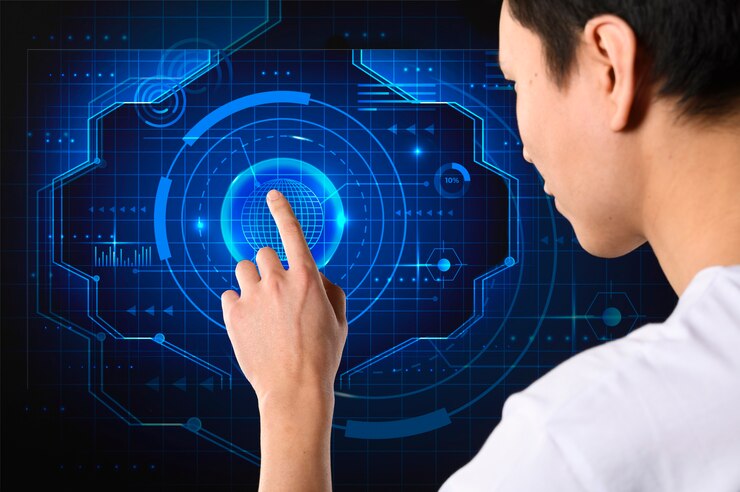The purpose of biometric technology is to accurately identify individuals based on their unique biological characteristics, such as fingerprints, facial features, or iris patterns. This technology is used for secure access control, attendance tracking, and identity verification, providing a more reliable and efficient method compared to traditional methods like ID cards or passwords.
By leveraging the distinct physical traits of individuals, biometric systems enhance security and streamline processes in various industries, from government and finance to healthcare and retail. As technology continues to advance, biometric solutions are becoming increasingly integrated into everyday life, offering a seamless and reliable way to authenticate and verify individuals.
Such advancements are reshaping the way organizations manage security and identity verification, making biometric technology a crucial tool in the modern digital landscape.
Understanding Biometric Identification
The purpose of biometric identification is to accurately and securely verify an individual’s identity using unique biological or behavioral characteristics. Understanding the various aspects of biometric technology can shed light on its significance in enhancing security measures and streamlining identity verification processes.
Definitions And Basics
Biometric identification refers to the process of using unique physical and behavioral traits to authenticate or identify an individual. Unlike traditional forms of identification such as passwords or ID cards, biometric identification relies on the distinctiveness of characteristics like fingerprints, facial features, iris patterns, voiceprints, or even behavior patterns like gait or typing rhythm.
Types Of Biometric Technologies
There are various types of biometric technologies that have been developed to utilize different biological and behavioral characteristics for identity verification:
- Fingerprint Recognition
- Facial Recognition
- Hand Geometry
- Retina and Iris Recognition
- Voice Recognition
- Signature Verification

Credit: www.kaspersky.com
Applications Of Biometric Systems
Biometric systems have various applications in different fields, serving the purpose of providing efficient and secure methods for identifying and verifying individuals. The use of biometric data has become increasingly important in today’s digital age, impacting security, access control, and identity verification in government and law enforcement. This article will delve into the specific applications of biometric systems, exploring their role in enhancing security measures and streamlining identity authentication processes.
Security And Access Control
One of the primary applications of biometric systems is in the domain of security and access control. Biometric technology offers a robust and reliable means of restricting unauthorized access to sensitive areas or data. By utilizing fingerprints, iris scans, facial recognition, or other biometric identifiers, organizations can enhance their security infrastructure by implementing biometric access control systems, thereby minimizing the risk of unauthorized entry or misuse of resources.
Identity Verification In Government And Law Enforcement
Another crucial application of biometric systems is seen in identity verification in government and law enforcement. With advancements in biometric technology, government agencies and law enforcement bodies can accurately authenticate the identity of individuals, aiding in the prevention of identity fraud, illegal immigration, and criminal activities. Biometric identification systems play a pivotal role in enhancing national security measures, as they provide a more foolproof method of verifying the identity of citizens and individuals under investigation.
Advantages And Limitations Of Biometric Authentication
Biometric authentication is a revolutionary technology that offers a secure and convenient way to verify an individual’s identity using unique physiological or behavioral characteristics. While it offers several advantages, it also comes with its own set of limitations and ethical considerations. In this article, we will explore the benefits of biometric systems, as well as privacy concerns and ethical considerations associated with their implementation.
Benefits Of Biometric Systems
Biometric authentication offers several compelling benefits, making it an attractive option for enhancing security and streamlining user authentication processes. Some key advantages include:
- Enhanced Security: Biometric traits such as fingerprints, iris patterns, and facial features are unique to each individual, making it extremely difficult for unauthorized access to occur.
- Convenience: Users no longer have to remember complex passwords or carry physical tokens, as their biometric data serves as their means of authentication.
- Reduced Fraud: By using biometric identifiers, organizations can significantly reduce instances of identity fraud and unauthorized system access.
- Efficiency: Biometric authentication can expedite the authentication process, allowing for quicker and more seamless user access.
Privacy Concerns And Ethical Considerations
While biometric systems offer significant advantages, they also raise important privacy and ethical considerations that cannot be overlooked. It is essential to address the following concerns before widespread adoption of biometric technology:
- Data Security: The storage and protection of biometric data must be robust to prevent unauthorized access or data breaches.
- Biometric Data Misuse: There is a risk of biometric data being misused for surveillance, tracking, or profiling purposes.
- Informed Consent: Individuals must have a clear understanding of how their biometric data will be used and stored, and consent should be obtained before collecting such data.
- Bias and Discrimination: Biometric systems must be designed and implemented to minimize biases and prevent discriminatory outcomes.
Future Trends In Biometric Technology
The future of biometric technology is marked by rapid advancements, innovative developments, and wide-ranging applications. As the demand for secure and convenient authentication methods continues to grow, the future trends in biometric technology are shaping the way we interact with digital systems and devices. With a focus on innovations and developments, as well as the evolution of biometric standards, the future of biometric technology is poised to revolutionize various industries and enhance user experiences.
Innovations And Developments
Innovations and developments in biometric technology are driving the advancement of cutting-edge authentication solutions. Emerging technologies such as 3D facial recognition, vein pattern recognition, and behavioral biometrics are pushing the boundaries of traditional biometric methods. These advancements aim to address issues related to accuracy, security, and user experience, paving the way for new avenues of application in various sectors.
The Evolution Of Biometric Standards
The evolution of biometric standards is crucial in ensuring interoperability, reliability, and security across different biometric systems and platforms. International organizations, such as the International Organization for Standardization (ISO) and the International Electrotechnical Commission (IEC), play a pivotal role in establishing and updating standards for biometric data interchange formats, performance testing, and implementation requirements. Additionally, the development of open standards and interoperable frameworks is essential for driving the adoption and integration of biometric technologies in diverse applications, from access control to e-commerce.
Implementing Biometric Solutions
Best Practices And Considerations
When implementing biometric solutions, it is essential to consider best practices to ensure seamless integration and optimal performance.
- Conduct thorough research on different biometric technologies to identify the most suitable solution for your specific needs.
- Collaborate with experienced biometric solution providers to evaluate the feasibility of implementation based on your organization’s infrastructure and security requirements.
- Ensure compliance with relevant regulations and standards to guarantee the ethical and legal use of biometric data.
- Provide adequate training and education to users to enhance their understanding of the biometric system and optimize user adoption.
Overcoming Challenges In Biometric Deployment
Despite the numerous benefits of biometric technology, deploying biometric solutions may present certain challenges that need to be addressed effectively.
- Address privacy concerns by implementing robust data protection measures and transparency in data usage policies.
- Manage scalability issues by selecting biometric solutions that can accommodate future growth and increased usage.
- Assess and mitigate potential security vulnerabilities through regular testing and evaluation of the biometric system’s resilience against unauthorized access and fraud.
- Provide ongoing support and maintenance to ensure the continuous functionality and reliability of the biometric system.
Frequently Asked Questions On What Is The Purpose Of Biometric?
What Are The 4 Benefits Of Biometrics?
The 4 benefits of biometrics include enhanced security, improved convenience, reduced fraud and streamlined processes. Biometrics offers a secure and efficient way to authenticate individuals using unique physical characteristics. This technology brings a higher level of security while simplifying access and authentication processes.
Why Do You Do Biometrics?
Biometrics is done for accurate identification and enhanced security, providing a unique way to authenticate individuals. It offers convenience and reliability in various applications, from access control to financial services. With biometrics, organizations can efficiently protect sensitive information and ensure regulatory compliance.
What Is The Purpose Of Biometric Verification?
Biometric verification serves the purpose of accurately identifying individuals through unique physical traits. It enhances security and reduces the risk of identity theft and unauthorized access. Being fast and reliable, it is widely used for access control, employee attendance tracking, and financial transactions.
What Is The Purpose Of Collecting Biometric Data?
Collecting biometric data serves to uniquely identify individuals for security and authentication purposes. It offers a more secure and reliable way of verifying identity compared to traditional methods like passwords or ID cards, enhancing access control and preventing fraud.
Conclusion
Biometric technology serves to enhance security, streamline processes, and improve user experience. Its purpose is to provide accurate and reliable identification and authentication methods. By incorporating unique physical and behavioral characteristics, biometrics offers a robust solution for industries such as finance, healthcare, and government.
Embracing biometric technology can revolutionize how organizations operate in the digital age.
